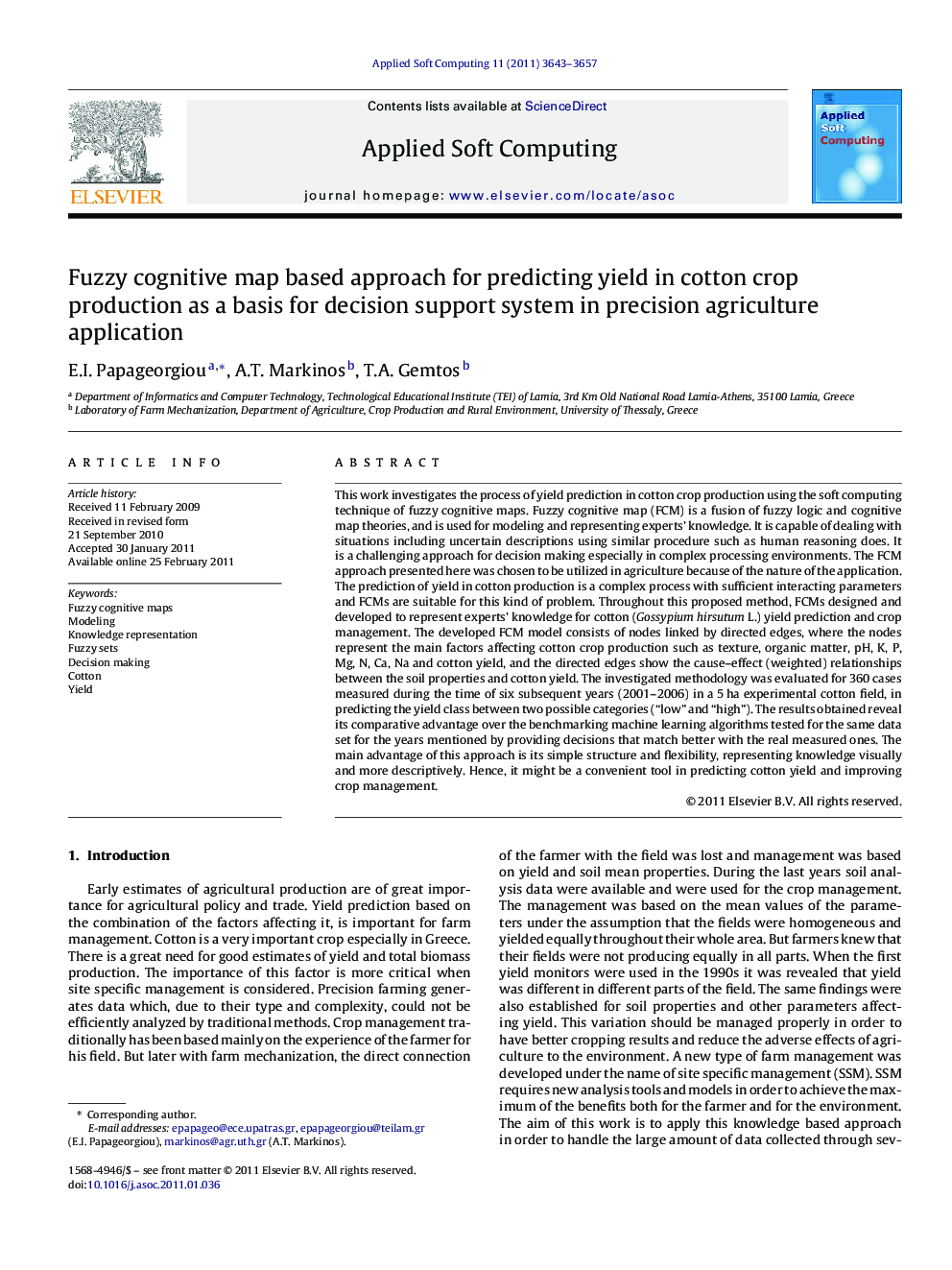| کد مقاله | کد نشریه | سال انتشار | مقاله انگلیسی | نسخه تمام متن |
|---|---|---|---|---|
| 496511 | 862861 | 2011 | 15 صفحه PDF | دانلود رایگان |

This work investigates the process of yield prediction in cotton crop production using the soft computing technique of fuzzy cognitive maps. Fuzzy cognitive map (FCM) is a fusion of fuzzy logic and cognitive map theories, and is used for modeling and representing experts’ knowledge. It is capable of dealing with situations including uncertain descriptions using similar procedure such as human reasoning does. It is a challenging approach for decision making especially in complex processing environments. The FCM approach presented here was chosen to be utilized in agriculture because of the nature of the application. The prediction of yield in cotton production is a complex process with sufficient interacting parameters and FCMs are suitable for this kind of problem. Throughout this proposed method, FCMs designed and developed to represent experts’ knowledge for cotton (Gossypium hirsutum L.) yield prediction and crop management. The developed FCM model consists of nodes linked by directed edges, where the nodes represent the main factors affecting cotton crop production such as texture, organic matter, pH, K, P, Mg, N, Ca, Na and cotton yield, and the directed edges show the cause–effect (weighted) relationships between the soil properties and cotton yield. The investigated methodology was evaluated for 360 cases measured during the time of six subsequent years (2001–2006) in a 5 ha experimental cotton field, in predicting the yield class between two possible categories (“low” and “high”). The results obtained reveal its comparative advantage over the benchmarking machine learning algorithms tested for the same data set for the years mentioned by providing decisions that match better with the real measured ones. The main advantage of this approach is its simple structure and flexibility, representing knowledge visually and more descriptively. Hence, it might be a convenient tool in predicting cotton yield and improving crop management.
Journal: Applied Soft Computing - Volume 11, Issue 4, June 2011, Pages 3643–3657